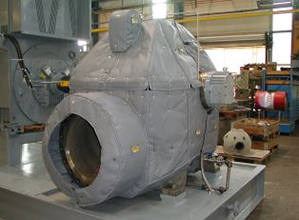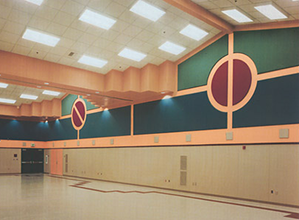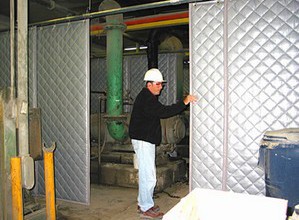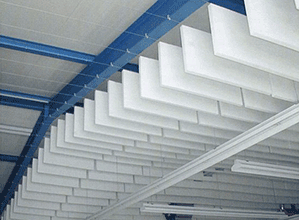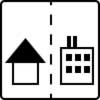Three Ways to Control Noise For Industrial Dust Collector Cyclone
 eNoise Control has worked with factories and plants to help them assess and lower industrial noise levels from different equipment inside and outside their factory. Dust collectors (also called cyclones) can be large contributors of noise. The noise can interfere with work, bother employees, or cause too much noise exposure and create hearing conservation issues.
eNoise Control has worked with factories and plants to help them assess and lower industrial noise levels from different equipment inside and outside their factory. Dust collectors (also called cyclones) can be large contributors of noise. The noise can interfere with work, bother employees, or cause too much noise exposure and create hearing conservation issues.
There are three ways to address dust collector noise:
- Identify if the system is closed loop or open exhaust. Open exhaust systems have a high cubic foot per minute (CFM) rate. The first recommendation is often to treat this high air exhaust rate. This open port can be acoustically treated with an exhaust silencer (i.e., muffler). eNoise Control can assist with silencer selection after establishing the duct size opening and the CFM.
- Identify the associated blower and motor of the collector system. The mechanical rotation of the blower creating turbulence is often a high noise source. The electric motor also contributes decibels depending on the size and
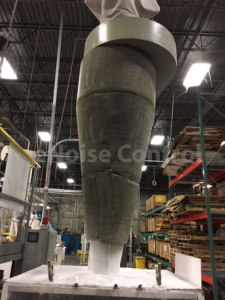 horsepower of the motor. eNoise Control can help you with this application by viewing photographs of your blower and motor. A common solution to this noise source is a sound barrier to screen the blower and motor noise from employees in the area. The most common screen is an enclosure with four sides and no roof.
horsepower of the motor. eNoise Control can help you with this application by viewing photographs of your blower and motor. A common solution to this noise source is a sound barrier to screen the blower and motor noise from employees in the area. The most common screen is an enclosure with four sides and no roof. - Vibration of cyclone casing. The sheet metal casing of the cyclone can be “excited” into vibration, thus amplifying sound waves into the factory space. This noise source is usually the most difficult to attenuate due to the large surface area of the cyclone casing. We have has success supplying sound blanket material to physically wrap the dust collector casing. We also recommend partitioning off the collector with sound barrier (curtain) material to shield and deflect the noise coming from the equipment.
Learn more about different types of dust collectors and noise control. If you would like to discuss your application, please call for a free acoustic phone consultation with one of our engineering team members.
